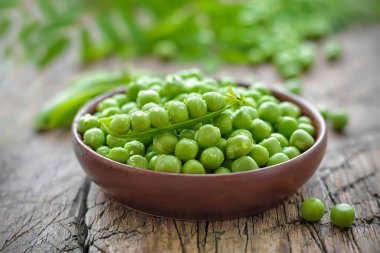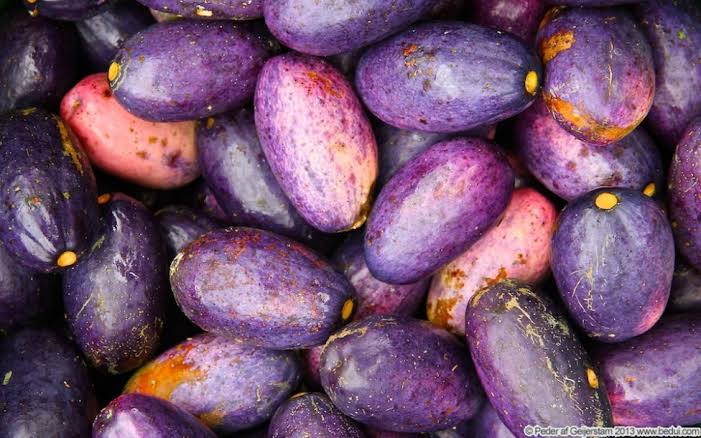Digitaria exilis is a tiny variety of millet of the grass species that is cultivated in many parts of African. In Nigeria, it is known as acha or fonio and is widely eaten there.
The Gambians refer to it as ‘findi‘ or ‘fundi.’ However, the common names of the plant are white fonio, fonio millet, and hungry rice.
Acha is one of the staple cereals in Nigeria, especially during the dry season.
The grain can be ground into flour and used to prepare local beverages; it can also be cooked in various forms with fish, meat, legumes, or vegetables.
The grains are also used to prepare feeds for domestic animals.
Acha is recognized for its abundance of essential nutrients that help in repairing body tissues and managing certain illnesses.
It is the smallest grain in the millet family and an excellent food source for numerous people.
Fonio, a member of the millet family, consists of two primary types: Digitaria iburua, which features white grains with black or brown spikelets and is primarily found in Nigeria, Togo, and Benin.
And the other is Digitaria exilis, a widely consumed white grain that grows from Senegal to Chad and is more accessible outside Africa, particularly in central Nigeria.
Digitaria exilis or white fonio is mainly grown in the highland region of the Nigerian plateaus, where it got its name “acha.”
The nutritional value and health benefits of acha or fonio, a truly wonder cereal is what you will find out in this article.
Nutritional Values Of Acha (Digitaria exilis)
Acha contains essential nutrients that nourish the body. 100 grams of acha grains consists of the following:
- Fat: 1.8 g
- 351 calories
- Carbs: 75 g
- Protein: 9 g
- Dietary Fiber: 3 g
- Energy: 367 kilocalories
- Calcium: 44 milligram
- Methionine: 4.5
- Phosphorus: 177 mg
- Thiamin: 0.5 mg
- Niacin: 2 mg
- Iron: 9 mg.
Furthermore, it is a good source of fibres, sulphur and phytonutrients. It contains more protein and fiber than rice and many other cereals.
It contains methionine and cysteine, two amino acids that play a key role in human health. Finally, it does not contain gluten.
9 Exciting Health Benefits of Acha (Digitaria exilis)

1. Enhances the cardiovascular system
Acha contains some vitamins and minerals that help boost the heart’s functioning.
Including it in your meal improves the heart’s function. It is rich in phosphorus, iron, and calcium, all of which are important to proper heart functioning.
As a whole grain, it is associated with a reduced risk of heart disease.
Furthermore, it is naturally low in cholesterol, sodium, and fat, making it a heart-healthy choice.
2. Improves metabolism
If you frequently complain of indigestion or constipation, you could consider adding acha to your meal.
It contains fiber that helps in the easy passage of food throughout the body for easy and proper breakdown.
To add to that, acha or fonio contains essential minerals and B vitamins that support energy production and cellular function, contributing to a healthy metabolism
3. Supports liver health
Acha helps to purify the liver and the entire body since it contains amino acids such as methionine and cystine.
These amino acids present in acha have been said to support liver function and prevent liver problems.
4. Promotes weight loss
If you suffer from excess weight and wish to shed off some pounds, you should consider adding white fonio to your diet.
It is sufficient in fiber and helps in burning fat. Because if it’s high fiber content, it can help you feel fuller immediately. It also contains a moderate amount of calories.
5. Healthy gluten-free food
People with celiac disease or gluten sensitivity ate strongly advised to eat only foods that are gluten-free.
There are quite a number of gluten-free foods in Nigeria. Acha is also gluten-free but is equally very healthy and rich nutritiously.
6. Provides energy to the body
Acha is rich in carbohydrates which provide energy to the body.
It is also packed with many powerful vitamins and minerals that supply the body with energy.
In addition, acha has more carbohydrate content than millet, sorghum, and maize.
7. Prevents diabetes
Eating acha is also good for preventing diabetes. The food is rich in fibre and has a low glycemic index.
However, some animal studies have also shown that the plant might be useful in preventing diabetes.
A 2020 study investigated the effects of extract of Digitaria exilis grains in streptozotocin-induced diabetic male Wistar rats.
The study found out that Digitaria exilis grains possessed antidiabetic properties via increased insulin secretion. It is also an excellent food for those managing diabetes.
8. Loaded with plant-based amino acids
Fonio is beneficial for those lacking sufficient animal or protein-based foods in their diets.
Although its overall protein content is similar to white rice, fonio is notably richer in the sulfur-containing amino acids methionine and cysteine, which are not present in other grains such as corn, wheat, rice, sorghum, and barley.
Methionine is an essential amino acid that must be obtained through food, supports skin elasticity, hair growth, nail health, and tissue repair.
While cysteine is a non-essential amino acid, which is crucial for protein synthesis, detoxification, and the formation of taurine.
9. Boosts the growth of nails, hair, bones, and teeth
Fonio stands out among grains for its exceptional calcium content, as recognized by the United Nations Food and Agriculture Organization (FAO).
This characteristic makes fonio an excellent calcium source for vegans, lactose-intolerant individuals, and others who avoid dairy products, helping them meet their nutritional needs without relying on traditional dairy-based calcium sources.
The methionine present in acha helps produce cartilage that enhances the growth of your hair, nails, bones, and teeth.
It also improves the health of these body parts exponentially.
Conclusion
Despite its widespread cultivation and valuable features, acha is referred to as an underutilized crop because it doesn’t get enough attention, research, and development.
Nonetheless, the health benefits of acha should convince you to take it seriously.
It could be cooked as plain rice, prepared like a jollof, taken as cereal, ground to powder, or used for baking.
ALSO READ:
- 8 Super Health Benefits of Irish Potatoes
- 7 Magnificent Health Benefits of Oats
- 9 Perfect Health Benefits of Pure Cocoa Powder
- 8 Juicy Health Benefits of Eating Fresh Tomatoes
- 7 Awesome Health Benefits of Pepper Fruit
- 7 Wonderful Health Benefits of Guinea Corn
- 14 Impressive Health Benefits of Dates (Dabino)
Collins Nwokolo is a human physiologist, writer and health enthusiast. He loves writing helpful articles on health and fitness, which he enjoys sharing with everyone.






